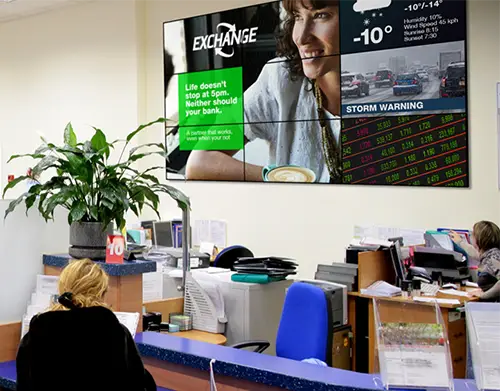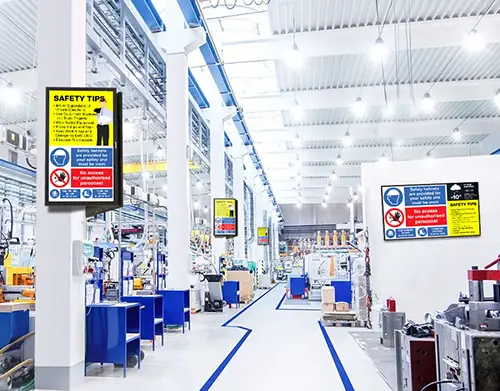Maximizing Efficiency:
How to Integrate Digital Signage with Existing IT Infrastructure
Businesses are constantly seeking innovative ways to elevate operational efficiency and enhance customer engagement. One transformative strategy at the forefront of this quest is the smart integration of digital signage with existing business infrastructure. This approach not only streamlines operations but also enriches customer interactions, marking a significant leap towards a unified technological ecosystem. Let’s embark on a journey through the essential phases of this integration, spotlighting the pivotal roles of system compatibility, networking prowess, and the magic of API integrations.
A Deep Dive into Compatibility and Seamless System Integration
The integration adventure begins with a critical assessment of how new digital signage solutions align with your business’s established hardware and software landscape. The essence of this phase is to ensure a symbiotic relationship between the digital signage system and the company's IT infrastructure, encompassing everything from media players and screens to servers and network configurations. The ultimate aim here is for digital signage to flawlessly pull and present data from key business systems, thereby enhancing the relevance and impact of displayed content.
Networking: The Unsung Hero of Digital Signage Success
Beyond compatibility, the backbone of digital signage’s integration success lies in robust and secure networking. This stage focuses on meticulously planning how digital signage content delivery integrates with the existing network infrastructure, ensuring it complements rather than congests the system. Techniques like VLAN segmentation come into play, smartly isolating digital signage traffic to maintain network integrity. Furthermore, applying Quality of Service (QoS) settings guarantees bandwidth prioritization for critical content, ensuring digital signage messages are delivered smoothly and securely, enhancing both operational reliability and content impact.
The Dynamic World of API Integrations
Perhaps the most exciting phase of digital signage integration is leveraging API (Application Programming Interface) capabilities. This forward-thinking approach automates the content update process, enabling a live feed of information from various business applications to digital signs. Imagine the power of displaying real-time inventory updates or integrating social media interactions directly onto your digital screens. API integrations transform digital signage into a dynamic and interactive platform, significantly boosting customer engagement and operational efficiency.

Redefining Business Operations and Customer Interactions
Through the strategic integration of digital signage with existing systems, businesses unlock a new realm of efficiency and engagement. This process, grounded in ensuring system compatibility, fortifying network infrastructure, and harnessing API integrations, paves the way for a seamless fusion of technology and business operations. Digital signage becomes not just a tool for communication but a central hub for real-time, interactive, and engaging content delivery.
As we look towards the future, the integration of digital signage within business ecosystems stands as a testament to the power of technology in transforming customer experiences and operational workflows. For companies poised to embrace this digital revolution, the journey towards integrating digital signage offers a pathway to achieving unparalleled engagement and efficiency.
To explore how digital signage can be tailored to fit unique industry needs and elevate your business to new heights, visit MediaTile's digital signage software solutions. Here, the future of interactive and efficient business operations awaits, ready to be unlocked through the innovative integration of digital signage technology.





